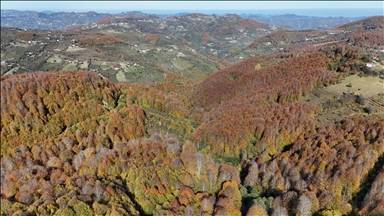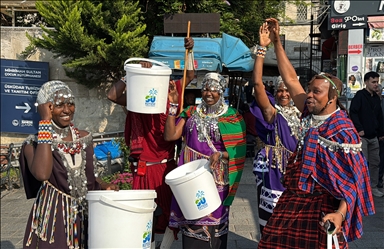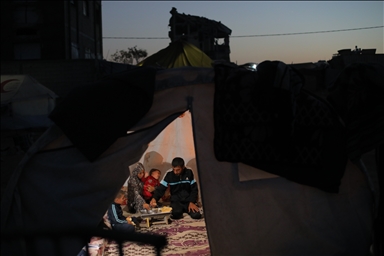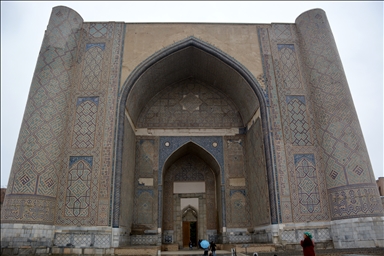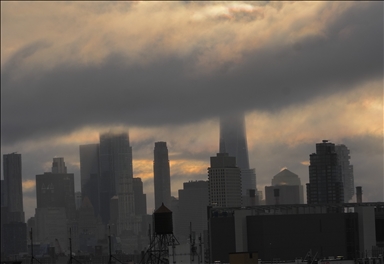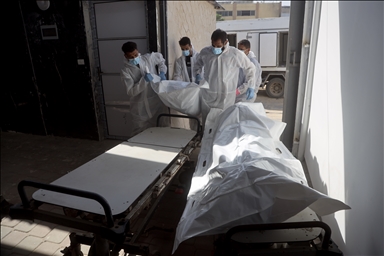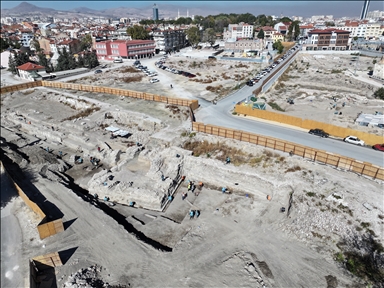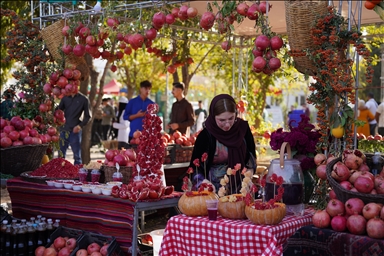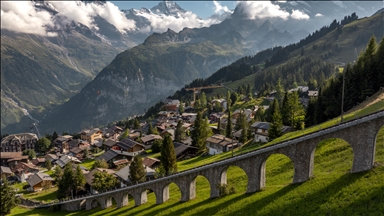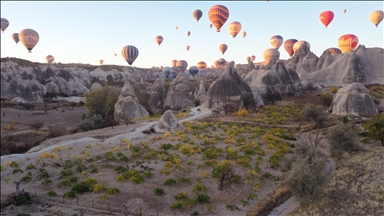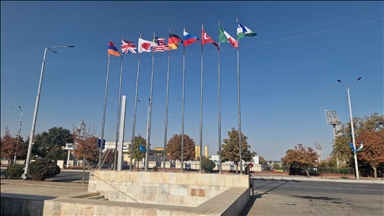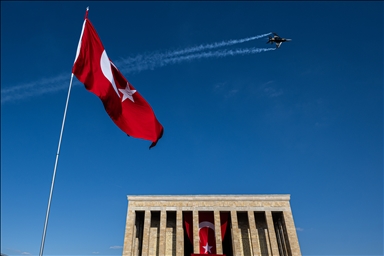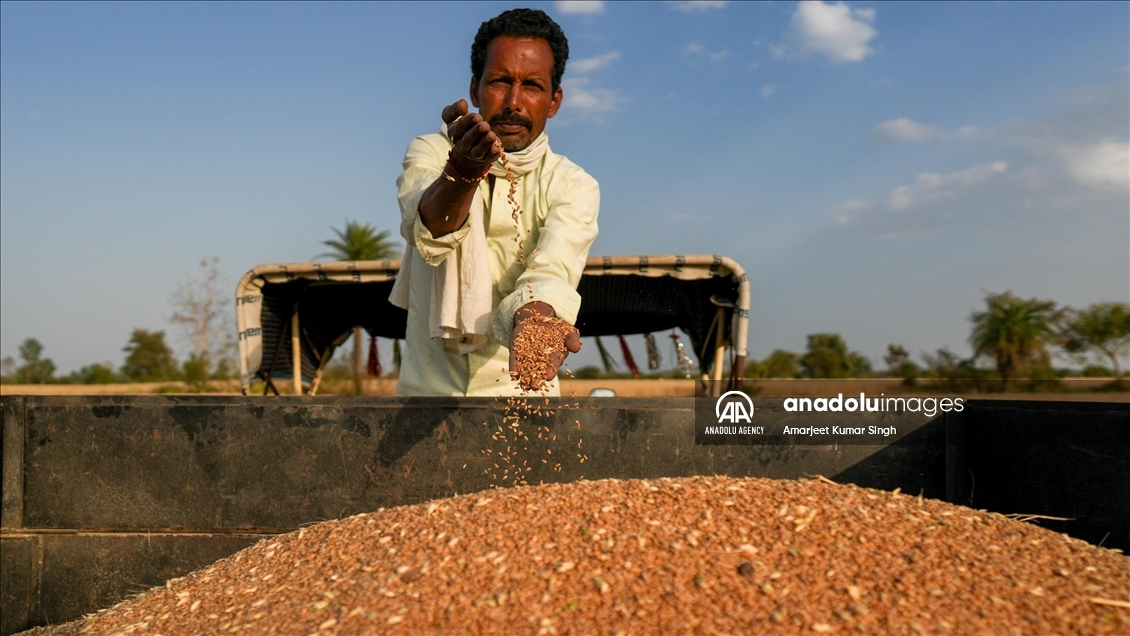
BHOPAL, INDIA- FEBRUARY 22: A farmer examines the quality of wheat grains at a farm on the outskirts of Bhopal, Madhya Pradesh, India, on February 22, 2024. India is the world's second-largest wheat producer and consumer, following China. This year, due to an El Nino phenomenon, the wheat crop's production is expected to be slightly lower, potentially undermining agricultural production and economic growth. Wheat is typically planted from October to November and harvested from February to March, following paddy. ( Amarjeet Kumar Singh - Anadolu Agency )

BHOPAL, INDIA- FEBRUARY 22: An Indian farmer harvests wheat crop at a farm on the outskirts of Bhopal, Madhya Pradesh, India, on February 22, 2024. India is the world's second-largest wheat producer and consumer, following China. This year, due to an El Nino phenomenon, the wheat crop's production is expected to be slightly lower, potentially undermining agricultural production and economic growth. Wheat is typically planted from October to November and harvested from February to March, following paddy. ( Amarjeet Kumar Singh - Anadolu Agency )

BHOPAL, INDIA- FEBRUARY 22: An Indian farmer harvests wheat crop at a farm on the outskirts of Bhopal, Madhya Pradesh, India, on February 22, 2024. India is the world's second-largest wheat producer and consumer, following China. This year, due to an El Nino phenomenon, the wheat crop's production is expected to be slightly lower, potentially undermining agricultural production and economic growth. Wheat is typically planted from October to November and harvested from February to March, following paddy. ( Amarjeet Kumar Singh - Anadolu Agency )
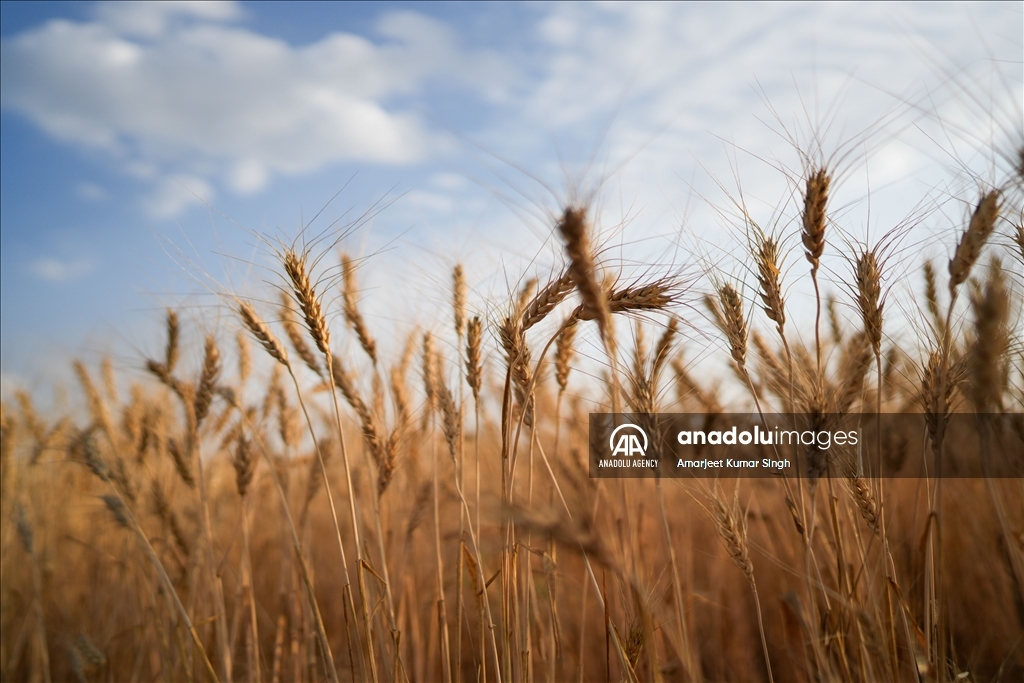
BHOPAL, INDIA- FEBRUARY 22: Wheat crop before a harvest at a farm on the outskirts of Bhopal, Madhya Pradesh, India, on February 22, 2024. India is the world's second-largest wheat producer and consumer, following China. This year, due to an El Nino phenomenon, the wheat crop's production is expected to be slightly lower, potentially undermining agricultural production and economic growth. Wheat is typically planted from October to November and harvested from February to March, following paddy. ( Amarjeet Kumar Singh - Anadolu Agency )

BHOPAL, INDIA- FEBRUARY 22: Wheat crop before a harvest at a farm on the outskirts of Bhopal, Madhya Pradesh, India, on February 22, 2024. India is the world's second-largest wheat producer and consumer, following China. This year, due to an El Nino phenomenon, the wheat crop's production is expected to be slightly lower, potentially undermining agricultural production and economic growth. Wheat is typically planted from October to November and harvested from February to March, following paddy. ( Amarjeet Kumar Singh - Anadolu Agency )

BHOPAL, INDIA- FEBRUARY 22: A combine harvester cuts through a field during a wheat harvest at a farm on the outskirts of Bhopal, Madhya Pradesh, India, on February 22, 2024. India is the world's second-largest wheat producer and consumer, following China. This year, due to an El Nino phenomenon, the wheat crop's production is expected to be slightly lower, potentially undermining agricultural production and economic growth. Wheat is typically planted from October to November and harvested from February to March, following paddy. ( Amarjeet Kumar Singh - Anadolu Agency )
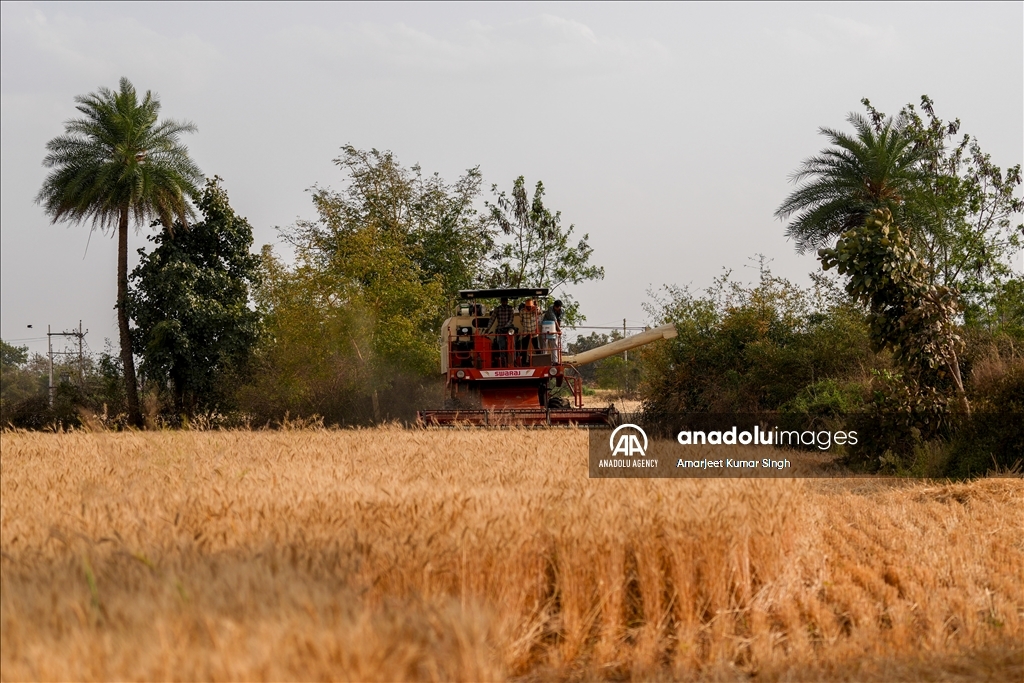
BHOPAL, INDIA- FEBRUARY 22: A combine harvester cuts through a field during a wheat harvest at a farm on the outskirts of Bhopal, Madhya Pradesh, India, on February 22, 2024. India is the world's second-largest wheat producer and consumer, following China. This year, due to an El Nino phenomenon, the wheat crop's production is expected to be slightly lower, potentially undermining agricultural production and economic growth. Wheat is typically planted from October to November and harvested from February to March, following paddy. ( Amarjeet Kumar Singh - Anadolu Agency )
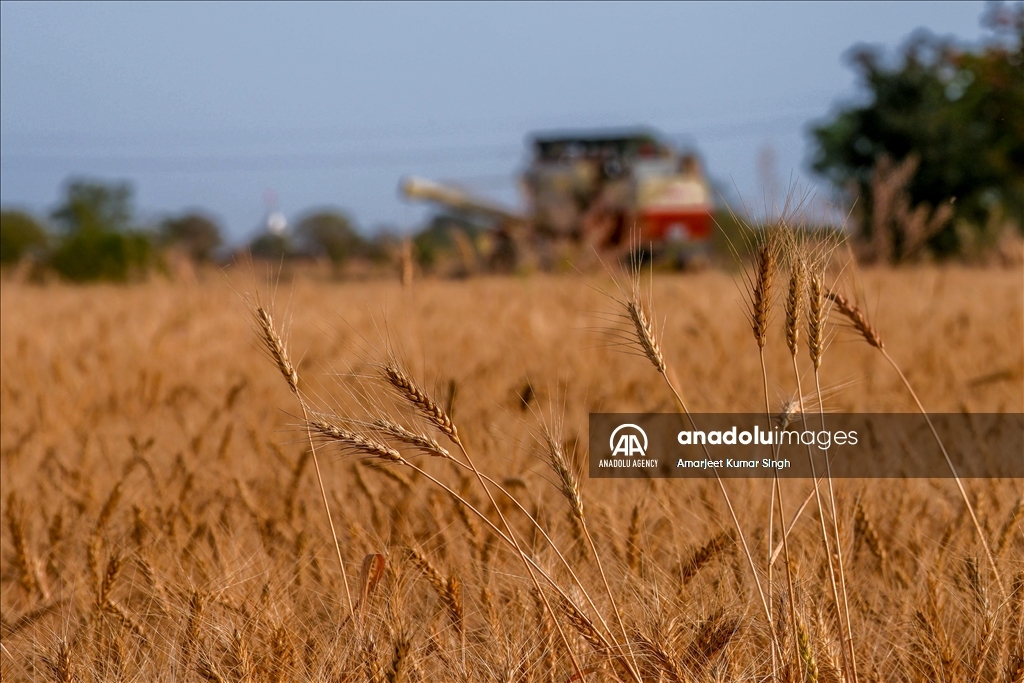
BHOPAL, INDIA- FEBRUARY 22: A combine harvester cuts through a field during a wheat harvest at a farm on the outskirts of Bhopal, Madhya Pradesh, India, on February 22, 2024. India is the world's second-largest wheat producer and consumer, following China. This year, due to an El Nino phenomenon, the wheat crop's production is expected to be slightly lower, potentially undermining agricultural production and economic growth. Wheat is typically planted from October to November and harvested from February to March, following paddy. ( Amarjeet Kumar Singh - Anadolu Agency )
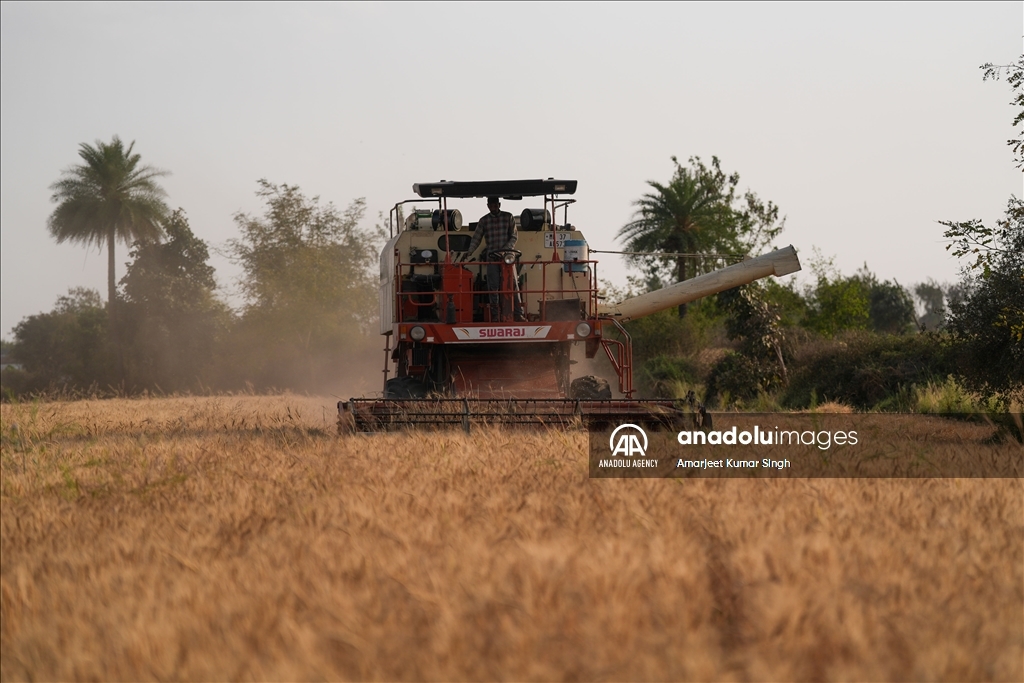
BHOPAL, INDIA- FEBRUARY 22: A combine harvester cuts through a field during a wheat harvest at a farm on the outskirts of Bhopal, Madhya Pradesh, India, on February 22, 2024. India is the world's second-largest wheat producer and consumer, following China. This year, due to an El Nino phenomenon, the wheat crop's production is expected to be slightly lower, potentially undermining agricultural production and economic growth. Wheat is typically planted from October to November and harvested from February to March, following paddy. ( Amarjeet Kumar Singh - Anadolu Agency )
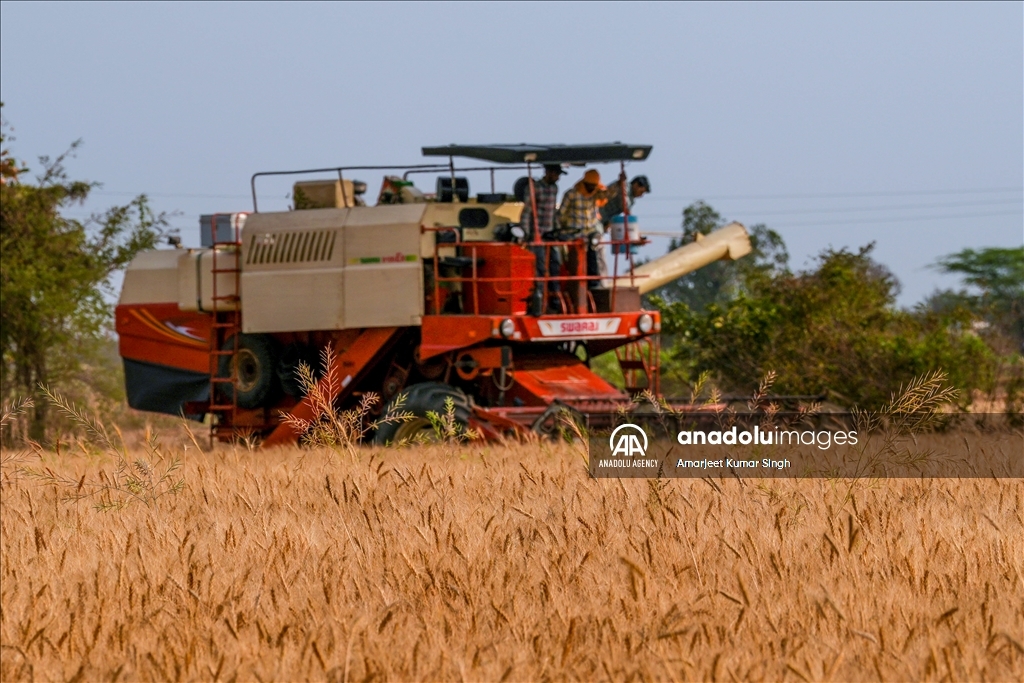
BHOPAL, INDIA- FEBRUARY 22: A combine harvester cuts through a field during a wheat harvest at a farm on the outskirts of Bhopal, Madhya Pradesh, India, on February 22, 2024. India is the world's second-largest wheat producer and consumer, following China. This year, due to an El Nino phenomenon, the wheat crop's production is expected to be slightly lower, potentially undermining agricultural production and economic growth. Wheat is typically planted from October to November and harvested from February to March, following paddy. ( Amarjeet Kumar Singh - Anadolu Agency )



